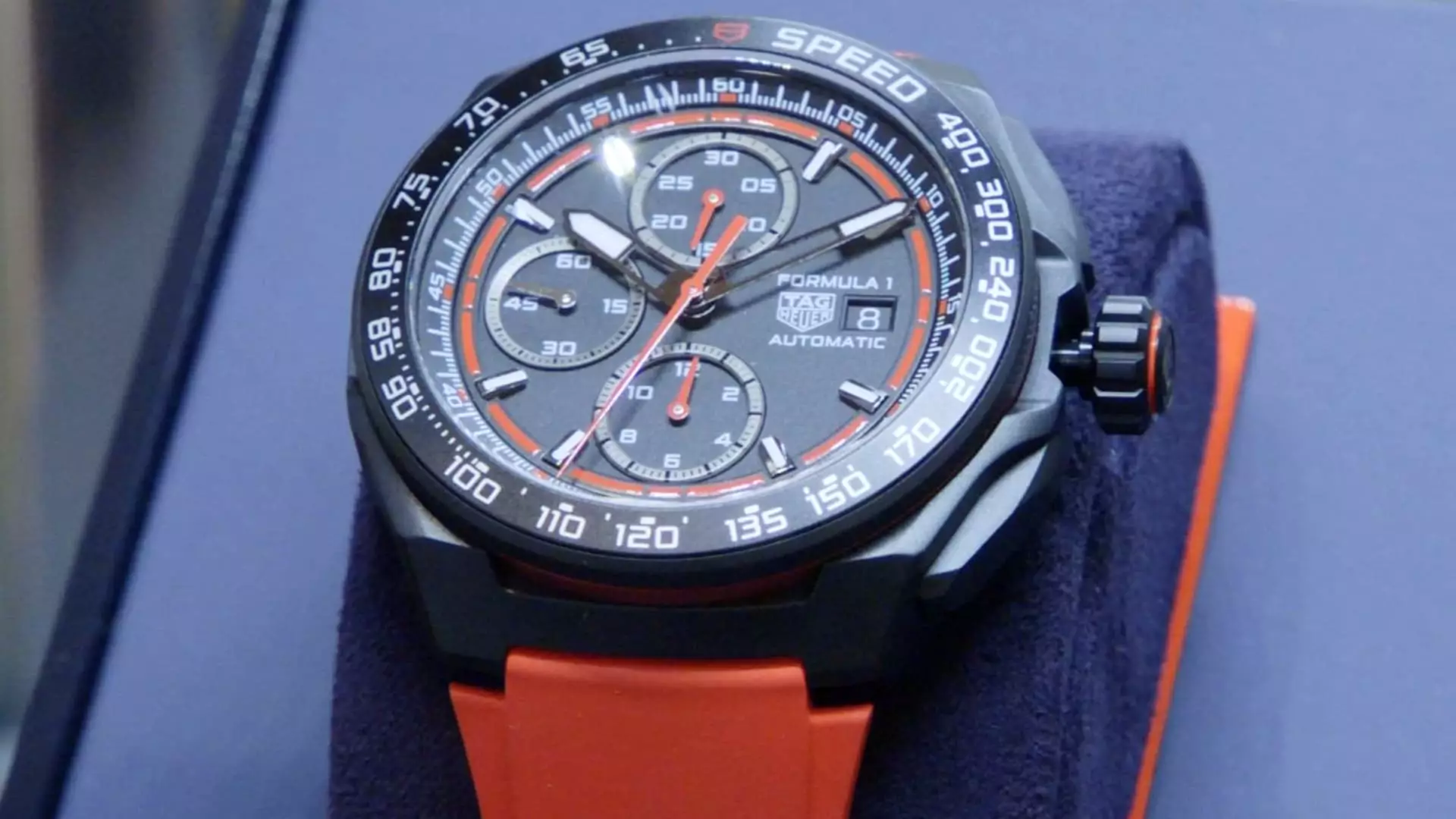The luxury goods market, notoriously sensitive to global events and consumer sentiment, has displayed its capacity for recovery following a year of declines. In the latest quarter, LVMH Moët Hennessy Louis Vuitton, a powerhouse in luxury goods, reported a rejuvenation in their watches and jewelry division, marking a 3% increase in sales. This rebound arrives after previous downturns, establishing a renewed optimism among brand leaders within the conglomerate as they gear up for a prosperous 2025.
LVMH’s performance in watches and jewelry starkly contrasts with its fashion and leather goods sector, which observed a decrement of 1%, and the wine and spirits division, which faced an even starker 8% decline. This recovery illustrates not only a sector-specific resurgence but also a shift in consumer behavior, particularly among American buyers. During interviews at LVMH Watch Week, brand CEOs expressed newfound optimism largely driven by American consumer spending, showcasing a noticeable confidence surge in luxury purchases as we step into the new fiscal year.
Jean-Christophe Babin, the CEO of Bulgari, revealed that the early months of the year have positively surprised him, indicating a positive upward trajectory in sales that deviates from the preceding year’s trends. Tiffany & Co.’s Anthony Ledru echoed these sentiments, linking renewed consumer confidence to the political landscape post-U.S. presidential elections. The feel-good factor is essential in luxury retail, emphasizing the emotional and psychological facets of consumer behavior.
Risks Lurking in a Reviving Market
Despite the favorable news, apprehension lurks beneath the surface. A significant hurdle remains—the specter of U.S. tariffs on luxury imports, particularly for Swiss timepieces and French luxury products. Previous threats from the Trump administration concerning tariffs on European goods cast a shadow over the otherwise positive outlook. This uncertainty could dampen growth and deter potential buyers if implemented.
In the face of such risks, brands appear undeterred, vigorously launching innovative products in anticipation of robust market performance in 2025. For instance, Louis Vuitton’s Tambour Taiko Spin Time collection, featuring numbers inspired by vintage airport displays, illustrates the creative endeavors and bold risks luxury brands are willing to take to attract high-volumes of sales.
The Strategy of Product Innovation
Product innovation serves as a cornerstone strategy, exemplified by Louis Vuitton’s Géralid Genta line’s introduction of the Gentissima Oursin Fire Opal, a watch crafted from exquisite opals mined from Mexican volcanoes. Jean Arnault, director of Louis Vuitton watches, emphasizes a long-term vision focused on establishing Louis Vuitton as a formidable player among top collectors. The emphasis on quality, high complications, and exclusive pricing reflects a commitment not only to aesthetics but to the craftsmanship expected from luxury items.
TAG Heuer’s recent announcement regarding their partnership with Formula 1 highlighted the instantaneous effects of strategic alignment with high-profile events. Antoine Pin, CEO of TAG Heuer, remarked on the immediate boosts in sales following the announcement, showcasing the power of brand association in the luxury landscape. The launch of a new Formula 1 collection exemplifying stylish ingenuity underlines how legacy brands are leveraging their heritage while embracing contemporary trends to captivate audiences.
On the jewelry front, Tiffany & Co. has successfully revitalized its brand presence, evidenced by a 9% increase in same-store sales in the fourth quarter. The company’s flagship location on Fifth Avenue, recently renovated at a significant financial investment, not only features luxurious retail spaces but also an upscale dining experience with the Blue Box Café, symbolizing the modern fusion of luxury shopping and experience-based services.
The transformations at Tiffany reflect a wider industry trend focusing on a lucrative consumer base with higher spending potential. Ledru acknowledged that Tiffany’s average price point has doubled since LVMH’s acquisition, highlighting the shift towards catering to affluent clientele seeking remarkable quality and unique retail experiences.
The Changing Dynamics of Luxury Consumer Demographics
An intriguing dimension influencing luxury sales emerges from the evolving demographic landscape, namely a notable increase in female purchasing power. Babin from Bulgari articulated this shift, pointing toward women’s growing financial independence reshaping the company’s target audience. With a significant rise in women buying luxury jewelry for themselves rather than as gifts, luxury brands are adapting their branding and marketing strategies to cater to this new dynamic.
The “Serpenti Viper” collection’s prominence reflects Bulgari’s understanding of gender dynamics in purchasing behavior. This awareness signals a revolutionary change in luxury retail that prioritizes inclusivity and understanding of varying consumer needs.
Consumer Engagement Beyond Borders
Finally, LVMH’s leadership acknowledged the importance of global consumer behavior, particularly how higher-end American clients are increasingly opting to acquire luxury items abroad, partly due to favorable currency exchange rates. The potential rise in tariffs could further amplify this trend, prompting luxury consumers to travel for their purchases.
Overall, LVMH’s recent performance in the watches and jewelry division offers a compelling narrative of resilience and adaptability in a landscape marked by challenges. With robust strategic initiatives centered on product innovation, consumer engagement, and an awareness of the evolving marketplace, the company appears well-positioned to navigate the coming years, despite any lurking uncertainties.

